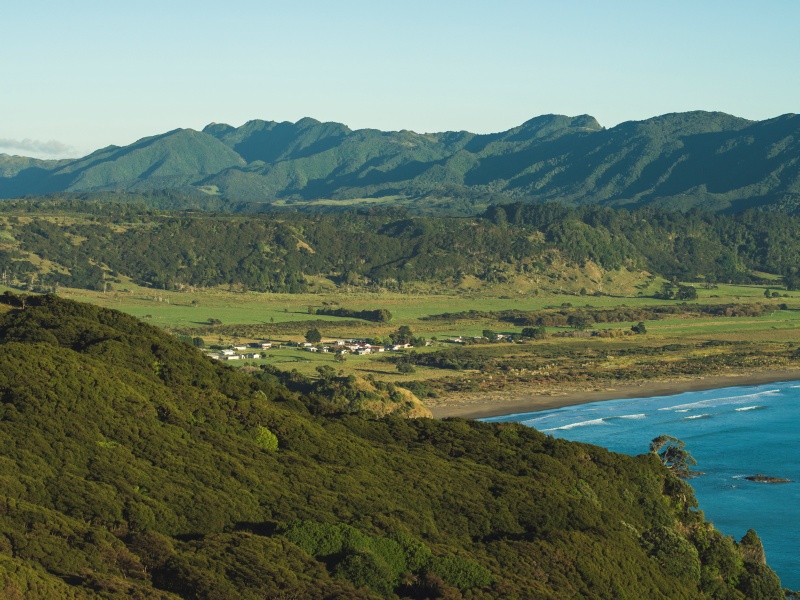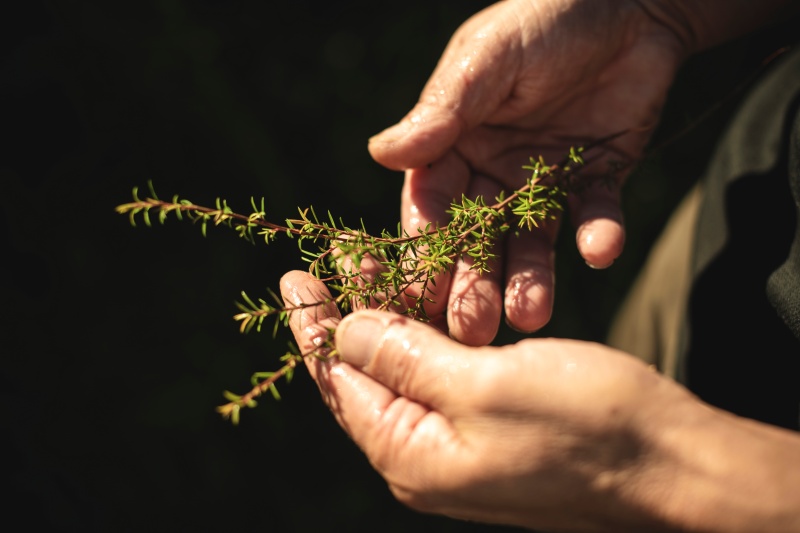Mānuka oil is known to be more potent than tea tree oil and is believed to be 1,000 times stronger than mānuka honey .This 100% pure essential oil has powerful plant-based qualities, with antibacterial, anti-inflammatory, and antimicrobial benefits.
In this article, learn more about this exceptional plant-based oil.
Where Did Essential Oils First Emerge?
The use of essential oils has roots in ancient times, particularly among the Egyptians, Asians, Indians, and Europeans, who distilled various oils for numerous purposes. Hippocrates, from 460 BC to 370 BC, known as the “Father of Medicine,” strongly supported the use of essential oils. Essential oils and plant-based medicines were integral components of his therapeutic methods. An example of a recently harnessed essential oil is mānuka oil, celebrated for its robust antibacterial, antimicrobial, and antifungal properties.
From Māori Roots: The Tradition of Mānuka Oil

The mānuka plant has a significant history in Aotearoa New Zealand.
First settlers, the Maori people, quickly recognised the many advantages of the endemic plant: its ability to regenerate, the usefulness of timber in tool-making and shelter-building, and its health-giving properties.
Importantly, they discovered its medicinal value, brewing teas from its leaves to address issues like diarrhea and urinary tract infections, while vapour inhalation was believed to alleviate cold symptoms. Māori caregivers applied poultices of pounded seed pods to wounds, while a sugary resin found on young branches offered sweetness and salves for burns. In modern times, essential oils distilled from mānuka leaves and tips have made their benefits more accessible, allowing for easy application in various formulations.
How Is Mānuka Oil Harvested?
Mānuka oil is a valuable essential oil obtained from the leaves and small branches of the mānuka bush through steam distillation.
Traditionally gathered from wild-harvested mānuka, recent times have introduced sustainable plantations on the East Cape of the North Island, ensuring responsible harvesting practices. This careful approach not only protects New Zealand’s native forests but also supports local communities and preserves the diverse wildlife, including a thriving bee population.
The detailed process involves pruning mānuka branches to allow for regrowth, followed by steam distillation to extract the precious oil. This sustainable method ensures minimal environmental impact. The resulting mānuka oil, known for its effectiveness, is a valuable resource, with every part of the plant being used efficiently. Additionally, byproducts like distilled branches and hydrosol find purpose in activities such as mulching and the creation of cosmetics, pharmaceuticals, and insecticides.
Why Does Mānuka Stand Out From Other Essential Oils?
Mānuka oil has gained attention for its exceptional qualities in natural health solutions. Rooted in the holistic traditions of Māori healers, the tohunga, this essential oil stands out for its unique composition, particularly the triketones that contribute to its efficacy. Here are the key qualities of mānuka oil:
- Unique Composition: High triketone content sets mānuka oil apart for its effectiveness.
- Fighting Bacteria and Fungi: Proven efficacy against harmful bacteria and certain fungi.
- Insect Repellent: Acts as a natural insect repellent, adding to its usefulness.
- Proven Effectiveness: Conclusive evidence of effectiveness against antibiotic-resistant strains.
- Versatile Application: Widely used in everyday products and embraced as a natural alternative.
- Biologically Active Components: The biologically active triketones make mānuka oil a preferred choice in natural health solutions and personal care.
Are all Mānuka Oils The Same?

Not all mānuka oils share the same characteristics, with three main mānuka chemotypes identified across New Zealand. These variations offer businesses the opportunity to choose oils that align with specific requirements, from Pinene-rich oils to those with high triketone content.
- Far North: High pinene content characterizes the mānuka oil in this region.
- East Cape and Marlborough Sound: The oil from these regions is distinguished by a high triketone chemotype.
- Rest of New Zealand: Exhibits a chemotype containing a complex of sesquiterpenes.
Mānuka Oil vs. Mānuka Honey
Distinguishing between mānuka oil and mānuka honey is crucial for businesses seeking specific natural health solutions. While both derive from the mānuka plant, their compositions and applications differ significantly.The table below shows the main difference between mānuka and mānuka honey.
| Mānuka Oil | Mānuka Honey |
| Produced through the distillation of mānuka bush leaves and branches. | Produced by bees using the nectar of the flower as their source of food. |
| There are three main mānuka oil chemotypes: Pinene, triketones, and sesquiterpenes. The antimicrobial effectiveness of mānuka oil is primarily influenced by the proportion of triketones present in the oil. | Comprises a saturated solution of sugars, predominantly fructose and glucose, along with various minor constituents, particularly phenolic compounds, thought to be the primary contributors to the antioxidant potential. |
| Can be formulated for skincare products with reduced oil levels in the formulation, maximising its effectiveness. | Capable of being formulated for skincare products, but there is limited evidence of efficacy at concentration. |
| Antibacterial, anti microbial, anti-viral, and anti-inflamatory properties. | Antibacterial and antimicrobial properties. |
Mānuka Oil vs. Tea Tree Oil
Despite belonging to the same family, their distinctions are becoming increasingly evident with the growth of the mānuka oil industry. Tea tree oil has been distilled since World War II, while the distillation of mānuka oil started only in recent years.
| Mānuka | Tea Tree |
| The Plant | |
| Belonging to the myrtle family, mānuka is scientifically identified as Leptospermum Scoparium. This plant is native to New Zealand. | Melaleuca is a plant indigenous to Australia and a few adjacent Pacific islands, belonging to the myrtle family. |
| The Benefits | |
| Mānuka oil is enriched with potent triketones, flavonoids, and various chemical compounds that contribute to the substance’s robust antibacterial and antifungal properties. | Tea tree oil is highly secure yet potent for various topical and household uses, thanks to its anti-fungal and antibacterial attributes. |
| The Uses | |
|
|
Understanding Mānuka Oil: A Scientific Overview
Antimicrobial Properties
Mānuka oil is naturally antimicrobial, with triketones acting as natural compounds that effectively eliminate or hinder the growth of microorganisms. These triketones can be categorised into antibacterial and antifungal agents, boosting the immune response in wounds and speeding up the healing process.
Antibacterial Strength
The East Cape chemotype of mānuka oil stands out for its richness in triketones, showcasing strong antibacterial activity, particularly against gram-positive bacteria like Staphylococcus aureus and its antibiotic-resistant strain MRSA. Extensive studies confirm its effectiveness against acne-causing bacteria.
Antifungal Potency
Mānuka oil, highlighted in a Journal of Microbiology study, demonstrates significant antifungal properties, effectively restraining the growth of fungi.
Anti-aging and Antioxidant Attributes
Studies found that mānuka oil has anti-aging and antioxidant properties. It can protect the skin from UV-B induced damage by reducing increases in skin thickness and wrinkles when applied topically. Anti-Inflammatory Effects: The anti-inflammatory power of mānuka oil has been supported by scientific studies, particularly in cases where inflammation is caused by microorganism infection. This suggests its effectiveness in reducing inflammation from infections, making it useful for treating insect bites and healing infected wounds.
Antiviral Activity
A 2005 study reveals that mānuka oil can stop Herpes simplex viruses, especially HSV-1. It does this by interacting with the virus envelope and preventing it from entering host cells. Both flavanone and mānuka oil show powerful antiviral activity, indicating possible uses against various viral infections.
Muscle-Relaxing Effect
Mānuka oil has a relaxing effect on smooth muscles, which could be useful for treating muscle strain or inflammation. Ongoing research is looking into its potential use in addressing conditions like arthritis and fibromyalgia.
Healing Properties
Containing calamenene, mānuka oil has skin-soothing and analgesic properties, promoting the growth of healing tissues at wound sites. It serves as a comprehensive treatment, addressing bacterial or fungal growth first, followed by the reduction of inflammation and skin soothing, ultimately facilitating faster healing with minimal scarring.

